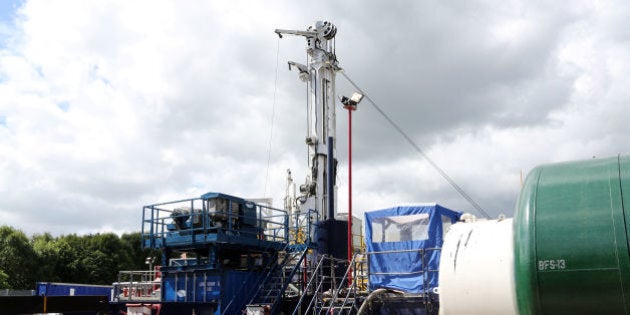
Fracking waste has been illegally dumped into the city's water treatment system on at least two occasions, according to a Dawson Creek city official.
Jim Chute, administrative officer for the city, told DeSmog Canada, illegal waste has been dumped three times and twice it was "clearly" fracking waste.
"It has actually been on three occasions in the last 18 months where we've caught inappropriate materials being dumped," he said. "One of those was a load of contaminated diesel. It's not clear to us exactly how that diesel got contaminated so we don't know if that was frack-related or not."
"The other two were a mix of compounds that were clearly flowback waste from a frack operation."
Chute said the chemicals used in the fracking process can damage the city's water and sewage treatment facilities which are unable to handle industrial waste. Chute told the Alaska Highway News the waste could cause irreversible damage to living organisms that play a crucial role in the city's water reclamation system.
Fracking in northeastern B.C.
Fracking, otherwise known as high-volume slickwater hydraulic fracturing, is a controversial extraction process used to free oil and gas from tight rock formations using extremely high pressures and large amounts of toxic chemicals.
The incidents in Dawson Creek involved subcontractors of the gas companies, Chute told DeSmog Canada, saying "virtually all jobs are outsourced to subtrades."
"If you're Encana Corporation, you probably don't drill that well yourself, it's probably contracted out to a subcontractor like Precision Drilling. And then Precision Drilling themselves don't build the lease roads, they contract that out to a subcontractor...and they don't do their own waste disposal, they contract that out."
"It's so busy up here," Chute said. "The situations we've encountered in every case has been an independent contractor to a company who signs on to a company [saying] they will dispose of the waste in an appropriate manner...and then behave badly, try to save themselves some money by coming to our dump instead of going to the proper spot."
Chute told the Alaska Highway News the contractors were fined and responsible for cleaning the contaminated holding tanks.
Toxic wastewater a problem for industry
Provincial regulator, the B.C. Oil and Gas Commission, is responsible for monitoring the activity of fracking companies, including the disposal of wastewater. B.C. has several private wastewater facilities where recyclable water is separated from toxic waste, which is then disposed of in underground injection wells.
In an emailed statement, B.C. Oil and Gas Commission communications co-ordinator Hardy Friedrich said, "B.C. has strict regulations related to the disposal of oil and gas waste in the Oil and Gas Waste Regulation and the Hazardous Waste Regulation."
He added: "Fluids used in hydraulic fracturing must be disposed in a deep underground formation via a service well. Most other waste must be disposed at an approved disposal facility. There are currently 106 operating deep well disposal sites in northeast B.C."
The difficulty of disposing of wastewater from fracking operations is a problem that has plagued the industry across North America. Flowback fluid from a fracking well includes toxic chemicals and oftentimes radioactive elements from extremely deep wells.
Most municipal wastewater systems are not equipped with the technology to handle such toxic waste in such high volumes.
Dawson Creek, located in the shale gas-rich Montney Basin, has seen a major increase in gas companies in recent years. The Montney Basin, along with the Horn River Basin also in northeastern B.C., could potentially account for 22 per cent of all North American shale gas production by 2020 according to the Canadian Association of Petroleum Producers.
In the early years of B.C.'s shale gas boom, Grant Shomody, president of Grantech Engineering International, warned of the potential problems producers would face when it comes to wastewater disposal in the Montney:
"If this play develops as producers hope, the number of wells being drilled would severely tax local water resources. In that case, we can expect a lot of ecologically related criticism. There's also the problem of disposing of the frac water or treating it for reuse. It's expensive, and Montney producers have not installed water treatment capabilities at their plants."
A challenge and liability for Dawson Creek
Chute expressed concern with illegal dumping of fracking wastewater, especially in light of new Environment Canada rules, which could hold city officials accountable for negligence.
"Previously there had been less onerous regulations, around how anyone who is a sewage treatment operator or handler of sewage...in order to prevent unauthorized discharge into watercourses," Chute explained.
These new federal regulations are more strenuous and more robust than any that had been in place in the past, Chute said.
"The onus was put on us to ensure we had the safeguards in place that nothing escaped into the environment. Part and parcel because of that, and [how] thinking changed around Enron and evidence of bad corporate behaviour, part of the regulations imposed personal liability on the people responsible."
"In Dawson Creek, that would be me," he said.
Dawson Creek is moving to a new system, said Chute, where a fail-safe dump station will monitor regularly for harmful compounds. If those compounds are found, the waste will be prevented from entering the regular treatment system.
Chute says the new facility, which will cost nearly $4 million to build, will be continuously monitored during open hours, 12 hours a day, six days a week.
"All of this is to make sure unauthorized industrial waste doesn't go into our system... We are going to make sure that we catch anybody that tries to circumvent the system by coming to us because we're a shorter haul than they'd have to go to the proper spot."